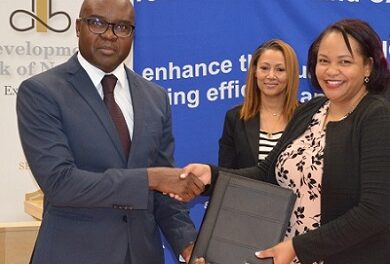
Omutumwa sent three questions to the spokesperson of the Ministry of Finance concerning the Credit Guarantee Scheme. And Mr Tonateni Shidhudhu responded as follows:
OMUTUMWA: During our telephonic conversation you have cleared the air concerning my question as to whether the Credit Guarantee Scheme which is being administered by the DBN through commercial banks provides for “collateral free loans” or not. You now say that the scheme makes no provision for “collateral free loans”.
It thus seems that the DBN has hijacked this scheme and put up its own conditions. The question now is why did the Government decide to channel the funds of the scheme through the DBN and create a middleman instead of working directly with the commercial banks who are the real administrators of the scheme?
In fact what is the role of the DBN in this scheme taking into account the fact that the commercial banks have capability by themselves to administer the scheme?
SHIDHUDHU: It is very important to note that the Development Bank of Namibia (DBN) is an arm of government and can be delegated to assist in any governmental projects such as the Credit Guarantee Scheme. DBNs role in the scheme is to implement and administer the scheme as delegated by the Minister of Finance. The financial institution’s role is to lend money to SMEs and to approach the CGS for loans for viable businesses requiring additional collateral.
The CGS is housed at NASRIA, a special risk insurer, who then provides a guarantee to the financial institutions to cover 60% of the collateral for loans to SMEs under the scheme. DBN supports NASRIA in the management of the CGS with credit risk assessment and portfolio management skills. To avoid conflicts of interest, DBN is not able to provide loans to SMEs under the CGS.
OMUTUMWA: The scheme provides for a 60% risk guarantee while the remaining 40% risk must be covered by the entrepreneur who must put up collateral equal to the 40%. The question is, why didn’t the commercial banks also take up a share of the risk in this scheme, say 60% Government, 20% entrepreneur, and 20% commercial bank?
Taking into account that this Covid-19 situation has affected everyone, and the need to stimulate the economy is across board, why didn’t commercial banks also chip in by taking up some risk as well instead of leaving everything on the shoulders of the Government and the entrepreneur?
SHIDHUDHU: The CGS was not established to deal with the Covid-19 pandemic, but as a general tool to enhance access to finance for SMEs. The 60% collateral cover was determined in consultation with commercial banks.
Depending on the financial viability of a business/project and a financial institution’s credit policies, banks could either take 40% of the risk or ask for additional collateral to cover this, either wholly or partially. As an example, let’s have a look at what happens if an SME fails to repay a N$ 100,000 loan it has with commercial bank participating in the scheme. In the absence of any collateral, the bank would need to write off the N$ 100,000. This is the reason why banks require collateral: to recover losses if a loan is not repaid.
With the CGS, 60%, or N$ 60,000 will be refunded to the bank by the CGS, but this would leave a N$ 40,000 loss for the bank. Therefore, if a bank is of the view that the risk of business failure is high for a specific entrepreneur, they will request additional collateral from the entrepreneur to limit the bank’s losses in the case of the business failing. Since the entrepreneur has greater control over the success of his/her business than the bank, it should not only be the bank that loses money if the business fails.
OMUTUMWA: The 60% risk guarantee means that the entrepreneur must fork out the rest (40%) of the security. This means that if an entrepreneur wants to borrow N$100,000 through the scheme he will be required to put up a security guarantee of N$40,000 because the Government will put up the security only of the N$60,000.
Now the question is, since the majority of the people of Namibia are poor so that they have nothing to their name that can be used as security for that N$40,000, is this scheme going to work in the benefit of those at the bottom of the socio-economic pyramid or it will be abused by those who are already well-off?
SHIDHUDHU: The CGS aims to step in here to provide support to promoters who do not have access to the high amounts of collateral that financiers usually require. It is also important to note that often SMEs require finance to acquire business assets that can also be used as collateral, if needed.
The rationale behind a CGS was that one of the key reasons why SMEs struggle to obtain access to finance is the inability to provide adequate collateral for loans. When banks lend money, they need to have the assurance that this money will not only be returned to them, but that they can also earn interest on the funding.
As a result, banks assess each loan in detail to determine the ability of the promoter to repay the loan (and interest). This also means addressing the risk of a business being unprofitable and thus unable to repay the loan from normal operations. This risk is addressed through requesting collateral that can be used to wholly or at least partially offset the outstanding loan balance and costs that may be incurred in collecting this outstanding balance.
As a result, it is quite normal that banks will require collateral equal to or even in excess of the loan amount. The amount of collateral required depends on the financial viability of a business/project and a bank’s credit policy.
In the photo: Ministry of Finance’s Chief Public Relations Officer Mr Tonateni Shidhudhu






